Negative Thinking Patterns to avoid as Software Engineer

Discover the common negative thinking patterns that can hinder a software engineer’s productivity and well-being, and learn strategies to navigate them effectively.
- What is Negative Thinking Patterns?
- Pattern 1: All-or-Nothing Thinking
- Pattern 2: Overgeneralisation
- Pattern 3: Mental Filtering
- Pattern 4: Discounting the Positive
- Pattern 5: Jumping to Conclusions
- Pattern 6: Magnification & Minimisation
- Pattern 7: Emotional Reasoning
- Pattern 8: Should Statements
- Pattern 9: Labeling
- Pattern 10: Personalisation and Blame
- Ways to Avoid Negative Thinking
- Finally
- Disclaimer
In software engineering, it’s common for developers to have a negative mindset, where they anticipate the worst outcomes, like project setbacks or code failures, even when there’s no evidence to suggest such results. This is because humans evolved to focus on potential threats for survival.
Though software engineers aren’t facing predators, they face modern challenges like tight deadlines, complex coding problems, or the pressure to innovate, which can trigger stress, imposter syndrome, and anxiety.
What is Negative Thinking Patterns?
Dr. Aaron Beck identified negative thinking patterns called “Cognitive Distortions,” which are irrational beliefs that individuals, including software engineers, might unknowingly reinforce over time.
For example, a developer might magnify a minor coding error, thinking it reflects their overall competence. Dr. Beck introduced Cognitive Behavioral Therapy (CBT) to address these distortions.
When applied to software engineering, this approach can help professionals recognise and challenge these negative beliefs, promoting resilience, enhancing problem-solving skills, and encouraging a more positive perspective on their tech journey.
Pattern 1: All-or-Nothing Thinking
 | All-or-nothing thinking, often called black-and-white thinking, is a cognitive distortion characterised by viewing situations in extreme, binary terms. Individuals entrenched in this mindset perceive events, actions, or outcomes as either entirely perfect or wholly flawed, leaving no room for the myriad shades of grey that typically define most scenarios. This rigid perspective can lead to an overly simplified and frequently inaccurate understanding of reality. By failing to recognise the nuances and complexities inherent in most situations, individuals set themselves up for heightened stress, disappointment, and a skewed perception of their successes and challenges. |
Definition:
All-or-Nothing is the tendency to evaluate your personal qualities in extreme, black-or-white categories.
Characteristics:
- Extreme Language: Use language in self-talk, such as
always,never,perfect, orruined. - Binary perspective: Viewing situations in extreme, either/or terms.
- Lack of nuance: Ignoring middle grounds or shades of gray.
- High self-criticism: Harsh judgment over minor imperfections.
- Rigid standards: Upholding inflexible, often unrealistic, standards.
Pattern 2: Overgeneralisation
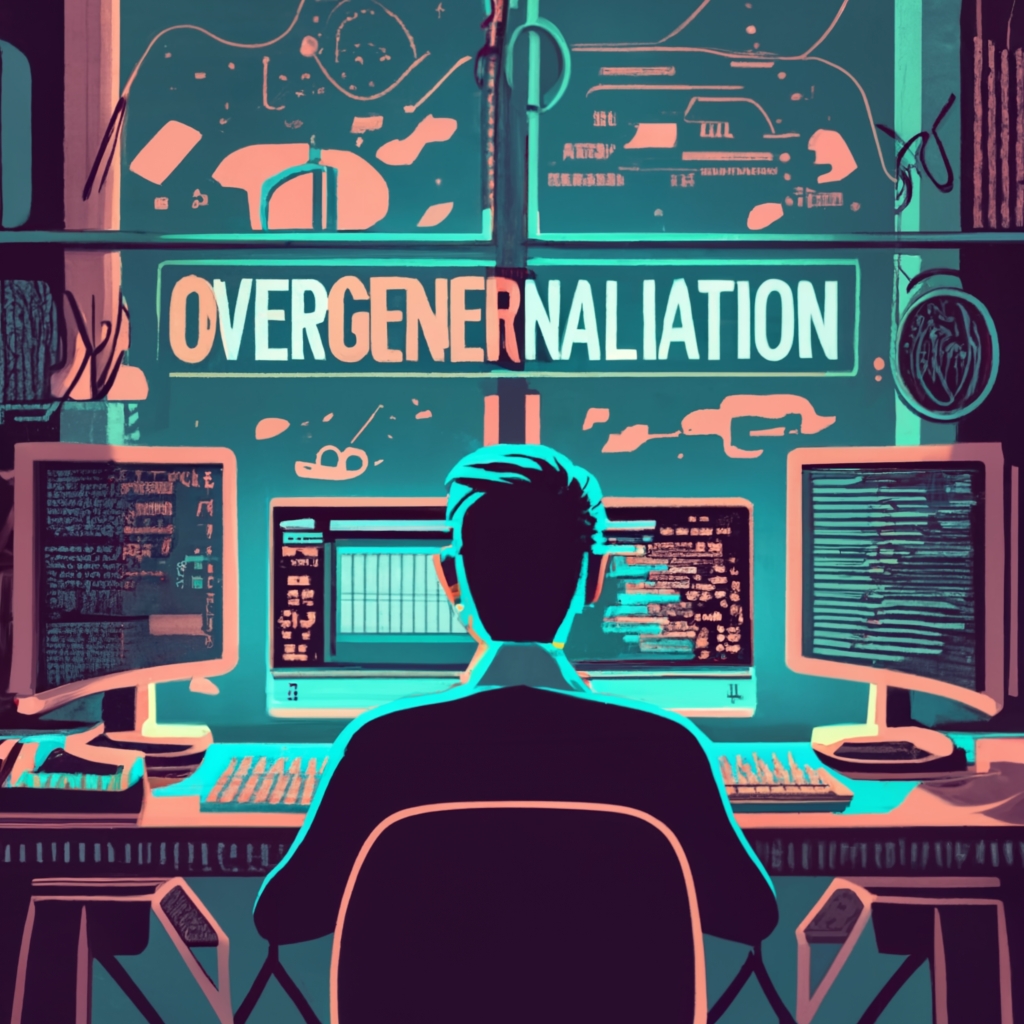 | Overgeneralisation is a cognitive distortion where individuals draw sweeping conclusions based on singular events or limited information. Instead of treating an occurrence as unique, they apply the same outcome or belief to a broad range of unrelated situations. This thinking pattern can lead to a pessimistic and generalised view of circumstances, painting diverse experiences with the same broad brush. By basing their beliefs on a few instances, individuals risk developing an overly negative and distorted perception of their surroundings, future events, and even their own capabilities, often limiting their potential and hindering personal growth. |
Definition:
Overgeneralisation is the process of drawing a general conclusion about their ability, performance, or worth on the basis of a single incident.
Characteristics:
- Broad conclusions: Making sweeping judgments based on limited events.
- Repetitive negativity: Applying past negative experiences to unrelated future situations.
- Stereotyping: Categorising groups based on isolated experiences.
- Pessimistic outlook: Expecting the worst based on singular events.
- Ignoring variations: Failing to see differences in similar situations.
Pattern 3: Mental Filtering
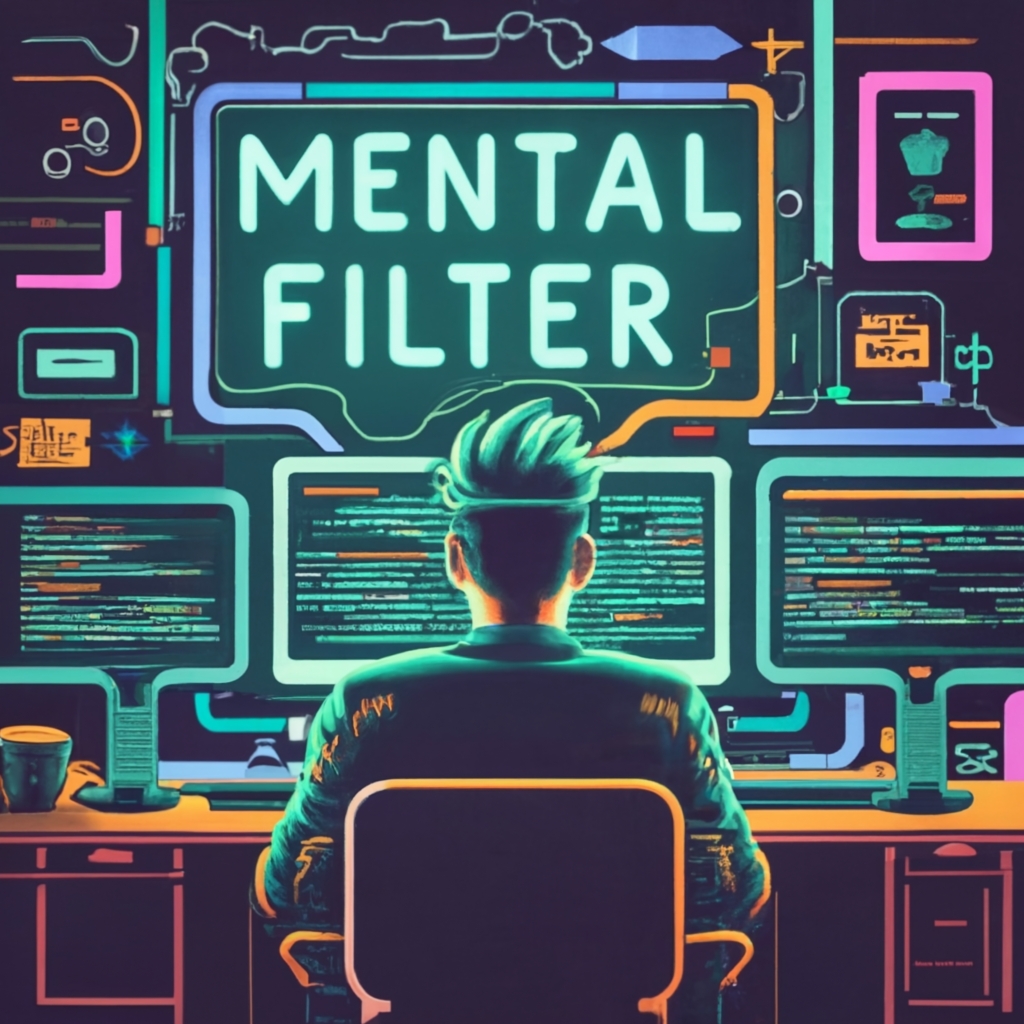 | Mental Filtering is a cognitive distortion where individuals focus predominantly on the negative aspects of a situation, often to the exclusion of any positive elements. It's akin to viewing the world through a lens that filters out the good and magnifies the bad. This selective attention can create a skewed perception of events, leading to feelings of inadequacy, hopelessness, or persistent dissatisfaction. By giving undue weight to negative details and dismissing positive ones, individuals with this distortion often miss out on a balanced view of their experiences, which can further entrench feelings of negativity and reinforce the cycle of pessimistic thinking. |
Definition:
The mental filter is the process of picking out a negative detail in any situation and dwelling on it exclusively, thereby perceiving the whole situation as negative.
Characteristics:
- Selective focus: Concentrating predominantly on negative details.
- Dismissal of positives: Overlooking or undervaluing positive events.
- Ruminative thinking: Continually dwelling on negatives.
- Skewed perception: Viewing situations through a consistently negative lens.
- Amplified negativity: Giving disproportionate weight to negative events.
Pattern 4: Discounting the Positive
 | Discounting the Positive is a cognitive distortion where individuals dismiss or invalidate positive experiences, often attributing them to external factors like luck or seeing them as flukes. Instead of acknowledging and celebrating their achievements or positive qualities, they downplay or ignore them, focusing instead on perceived negatives. This mindset can erode self-esteem and confidence, as accomplishments and compliments are never truly internalised. By consistently devaluing the positive aspects of their experiences, individuals reinforce a negative self-image and deprive themselves of the motivation and validation that come from recognising and embracing personal successes and strengths. |
Definition:
The process to transform neutral or even positive experiences into negative ones by filtering out or ignoring positive information when it occurs and dismiss it as a ‘fluke’ or argued against.
Characteristics:
- Rejection of success: Attributing achievements to external factors like luck.
- Minimisation: Downplaying positive experiences or achievements.
- Self-devaluation: Feeling undeserving of praise or success.
- Ignoring compliments: Disbelieving or brushing off positive feedback.
- Externalising success: Believing positive outcomes are unrelated to personal efforts.
Pattern 5: Jumping to Conclusions
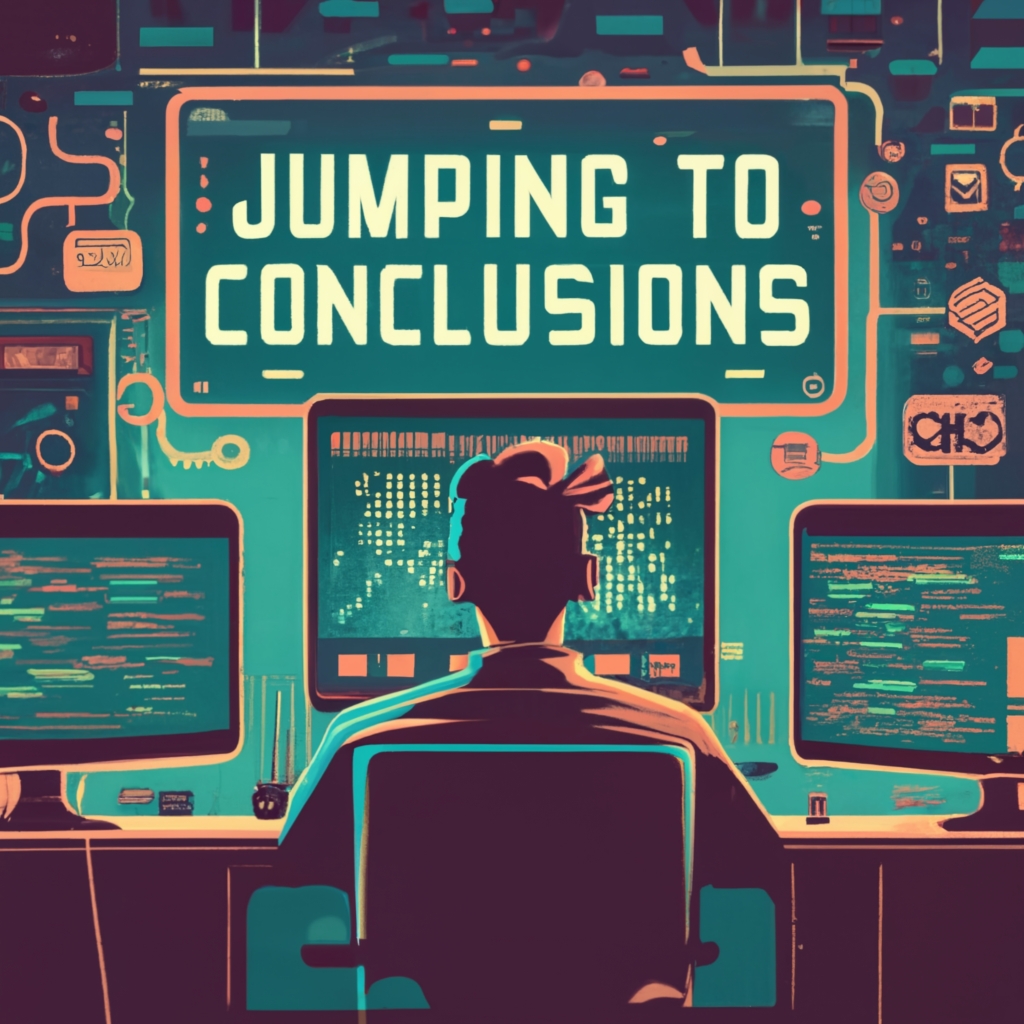 | Jumping to Conclusions is a cognitive distortion where individuals hastily form judgments or make assumptions without sufficient evidence. This can manifest in two primary ways: "mind-reading," where one presumes to know what others are thinking without explicit communication, and "fortune-telling," where one predicts negative outcomes for future events without any concrete basis. Such premature conclusions can lead to unnecessary anxiety, misunderstandings, and misguided actions. By operating on assumptions rather than seeking clarity or evidence, individuals risk misinterpreting situations, reinforcing negative beliefs, and missing out on potential opportunities or positive interactions. |
Definition:
The process of arbitrarily jumping to a negative conclusion that is not justified by the facts.
Characteristics:
- Mind-reading: Assuming to know others’ thoughts without evidence.
- Fortune-telling: Predicting negative outcomes without basis.
- Assumption-based actions: Making decisions based on unfounded predictions.
- Misinterpreting silence: Believing lack of feedback is negative.
- Proactive defense: Acting based on anticipated criticism or negativity.
Pattern 6: Magnification & Minimisation
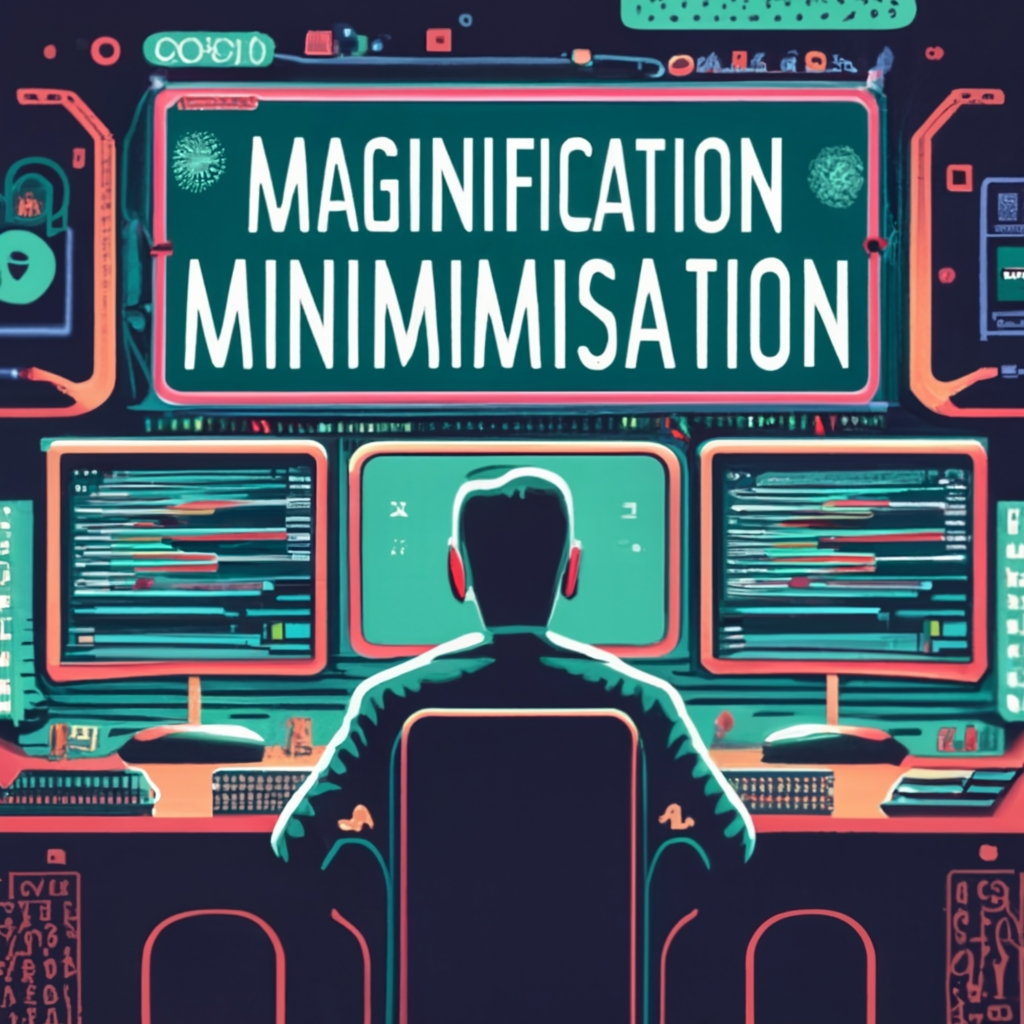 | Magnification and Minimisation are cognitive distortions where individuals either exaggerate the significance of negative events (magnification) or downplay the importance of positive events (Minimisation). Essentially, they're seeing things out of proportion. For instance, a minor mistake might be blown out of proportion as a catastrophic failure, while significant achievements are brushed off as trivial or unimportant. This skewed perspective can lead to overwhelming feelings of inadequacy or imposter syndrome, as individuals fail to give themselves credit for successes and overly criticise themselves for minor setbacks, preventing a balanced and realistic view of their experiences. |
Definition:
Magnification and minimisation are errors in evaluation which are so gross as to constitute distortions.
Characteristics:
- Catastrophising: Blowing mistakes or flaws out of proportion.
- Trivialising achievements: Downplaying or ignoring successes.
- Imbalanced perspective: Focusing on negatives while ignoring positives.
- Exaggerated self-criticism: Seeing minor errors as major flaws.
- Undervaluing strengths: Failing to recognise or accept personal strengths.
Pattern 7: Emotional Reasoning
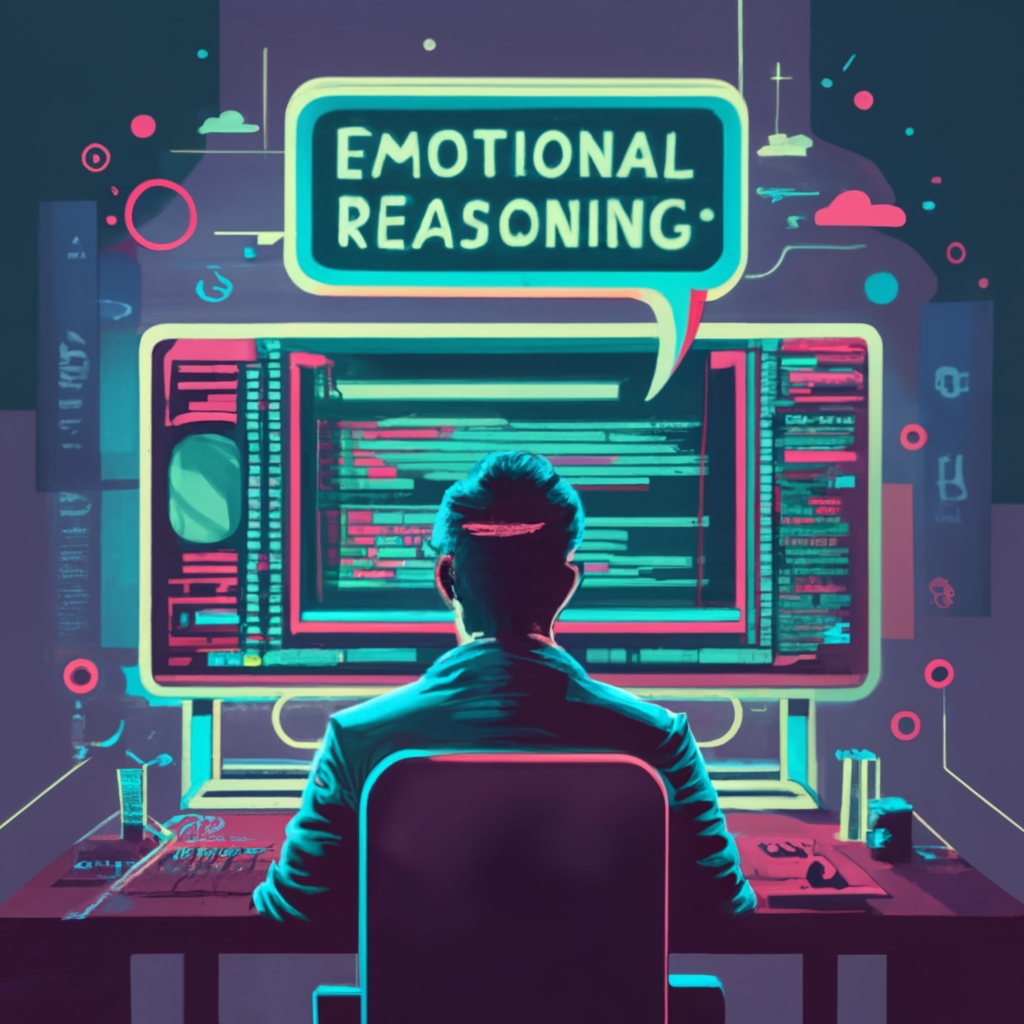 | Emotional Reasoning is a cognitive distortion where individuals believe that their emotions reflect objective reality. Essentially, they trust that it must be true because they feel a certain way. For instance, feeling inadequate or unworthy is taken as evidence that one is indeed inadequate or unworthy, regardless of external evidence to the contrary. This distortion can create a self-reinforcing loop: negative emotions lead to negative beliefs, which in turn intensify those emotions. By conflating feelings with facts, individuals can trap themselves in cycles of negativity, often overlooking objective evidence that challenges their emotionally driven beliefs. |
Definition:
The thinking where emotions are taken as evidence of truth.
Characteristics:
- Feeling as fact: Believing emotions reflect objective reality.
- Trusting gut over evidence: Relying on feelings over factual information.
- Emotional validation: Seeking situations that confirm negative feelings.
- Mood-based decisions: Making choices solely based on current emotions.
- Misinterpreting emotions: Believing temporary feelings are permanent traits.
Pattern 8: Should Statements
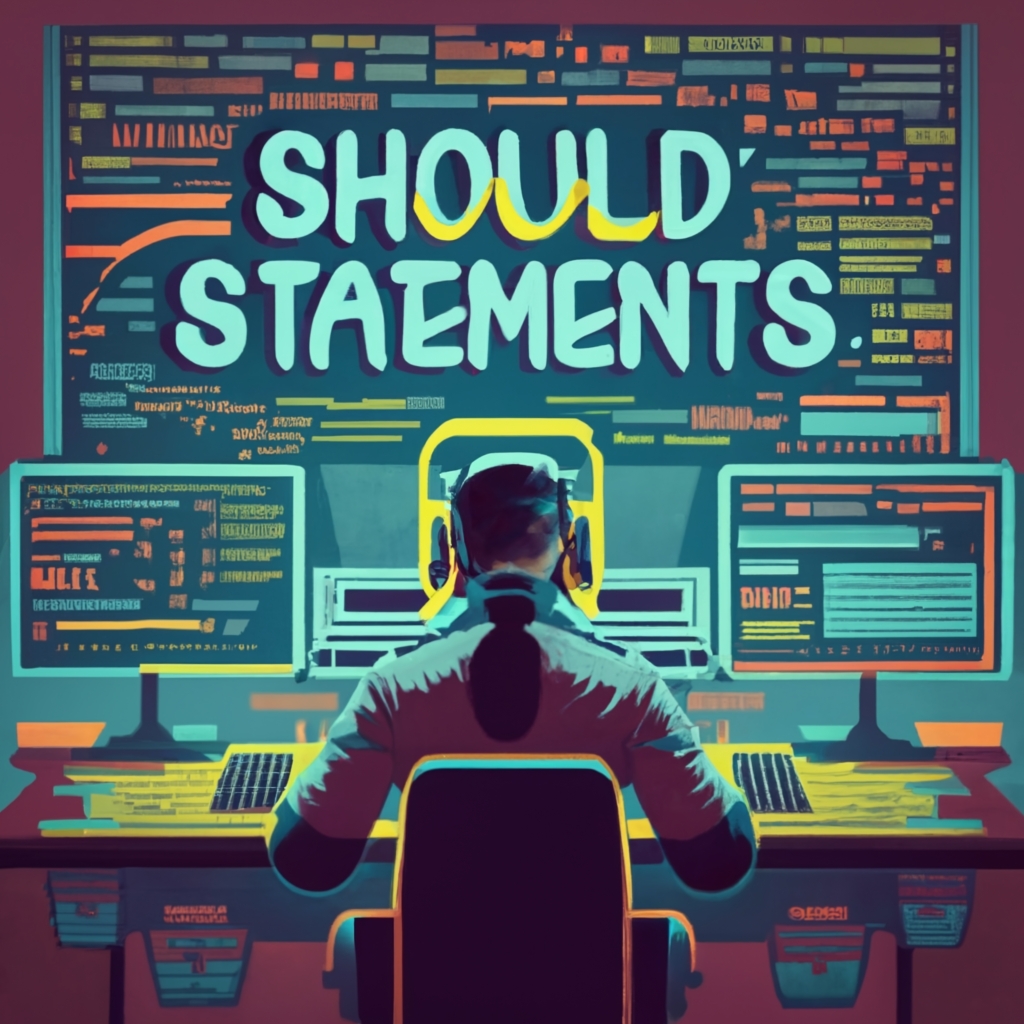 | Should Statements are cognitive distortions characterised by the persistent use of terms like "should," "ought to," or "must" in one's self-talk. These statements reflect self-imposed rules, expectations, or standards that can be unrealistically high or rigid. By adhering to these stringent beliefs about how one or others should behave, individuals often set themselves up for disappointment, guilt, or frustration. This thinking pattern can lead to feelings of inadequacy when one fails to meet these self-imposed standards. Moreover, when applied to others, it can result in resentment or impatience, as they might not act according to the individual's internalised "shoulds." |
Definition:
The attempts to motivate ourselves by saying “I should do this” or “I must do that” to motivate ourselves in this way can, paradoxically, lead to apathetic and unmotivated feelings.
Characteristics:
- Self-imposed rules: Holding rigid beliefs about personal behavior.
- Unrealistic standards: Setting unattainable expectations for oneself or others.
- Guilt-inducing self-talk: Using “should” or “must” leading to feelings of inadequacy.
- Resentment: Feeling frustrated when others don’t meet these standards.
- Inflexible mindset: Struggling to adapt when situations don’t align with “shoulds”.
Pattern 9: Labeling
 | Labelling is a cognitive distortion where individuals assign definitive labels to themselves or others based on specific behaviours or events, often oversimplifying complex realities. Instead of acknowledging a mistake as a singular event, they might label themselves as "a failure" or "incompetent". This form of overgeneralisation reduces a person's identity to a single, often negative, descriptor, ignoring the multifaceted nature of human beings. By attaching such labels, individuals can trap themselves in a self-fulfilling prophecy, where their beliefs about themselves influence their actions, further reinforcing the negative label and hindering personal growth and self-acceptance. |
Definition:
Labeling is where the affective reaction is proportional to the descriptive labelling of the event rather than to the actual intensity of a traumatic situation.
Characteristics:
- Over-identification: Defining oneself based on singular events or mistakes.
- Negative self-categorisation: Using terms like “failure” or “loser” as self-descriptors.
- Stereotyping others: Assigning labels to others based on limited knowledge.
- Fixed mindset: Believing labels are permanent and unchangeable.
- Reductionist thinking: Reducing complex situations or behaviors to simple labels.
Pattern 10: Personalisation and Blame
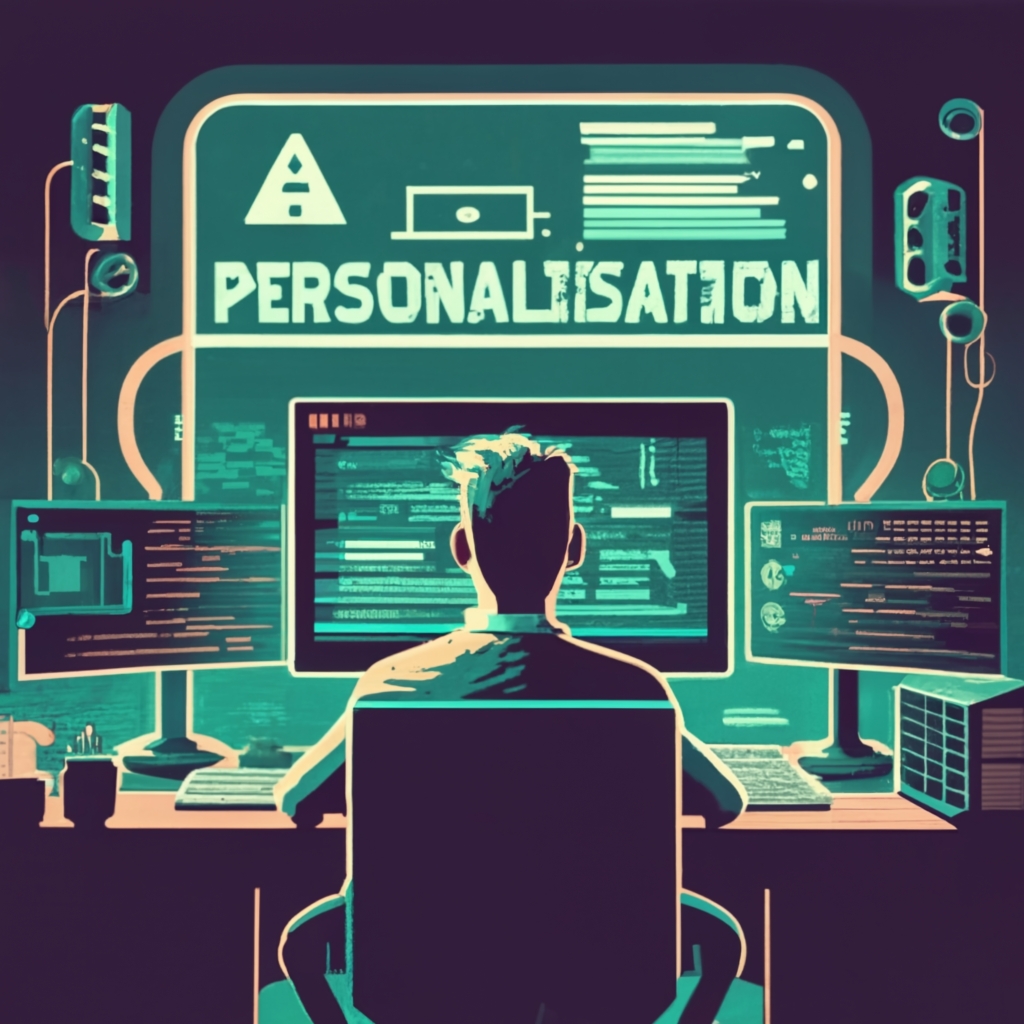 | Personalisation and blame are cognitive distortions where individuals misattribute the cause of external events. With personalisation, one takes excessive responsibility for negative events, believing they are the direct cause, even when not. Conversely, blame involves shifting all responsibility onto others, even when unwarranted. Both distortions prevent a balanced understanding of responsibility. For instance, if a project fails, someone personalising might believe it's solely their fault, while someone using blame might pin it entirely on a colleague. Such skewed attributions can lead to misplaced guilt, resentment, and an inability to learn from situations, hindering personal growth and effective interpersonal relationships. |
Definition:
You assume responsibility for a negative even when there is no basis for doing so. You arbitrarily conclude that what happened was your fault or reflects your inadequacy, even when you were not responsible for it.
Characteristics:
- Misplaced responsibility: Taking undue blame for external events.
- Externalising blame: Shifting all responsibility unfairly onto others.
- Guilt accumulation: Feeling responsible for things beyond personal control.
- Victim mentality: Believing external forces are always against oneself.
- Avoidance of accountability: Failing to recognise one’s role in events.
Ways to Avoid Negative Thinking
The following list contains some pointers on how to avoid negative thinking:
- Self-awareness: Regularly reflect on your thoughts to identify and challenge negative patterns.
- Mindfulness Practices: Engage in meditation or deep breathing exercises to stay present and reduce rumination.
- Positive Affirmations: Use uplifting statements to counteract negative self-talk and reinforce self-worth.
- Limit Negative Inputs: Reduce exposure to negative news, toxic individuals, or stressful environments.
- Gratitude Journaling: Focus on the positive by noting things you’re thankful for daily.
- Seek Feedback: Talk to trusted individuals about your thoughts to gain different perspectives.
- Stay Active: Physical activity can boost mood and reduce anxiety.
- Educate Yourself: Understand common negative thinking patterns to better recognise and combat them.
- Problem-solving Approach: Instead of dwelling on issues, focus on solutions and actionable steps.
- Professional Help: Consider therapy or counseling to address persistent negative thought patterns.
Finally
It is up to us to change our negative mindset into a positive one. Although external challenges and our own cognitive distortions can influence our thoughts towards pessimism, the initial step towards transformation is to identify and confront these patterns.
By actively challenging these negative beliefs and changing our perspective, we can develop a more optimistic outlook.
In the same way that a software engineer debugs and improves code, we can debug and refine our thought processes. With conscious effort, determination, and self-awareness, we can reprogram our minds, fostering resilience and embracing a more positive and empowering narrative in our lives.
Disclaimer
The content provided on this blog is for informational purposes only and is not intended as a substitute for professional advice, diagnosis, or treatment. Always seek the advice of a qualified health provider or therapist with any questions you may have regarding a mental health condition or emotional challenge.
